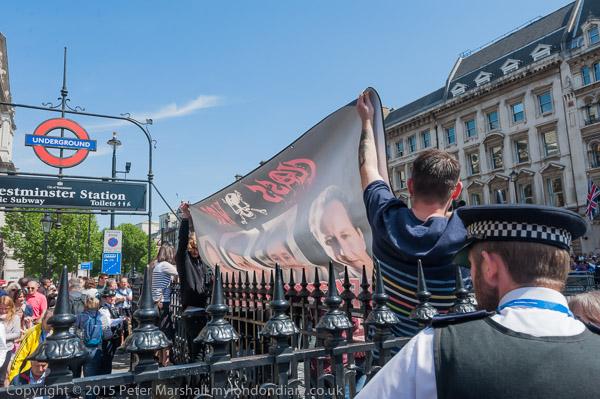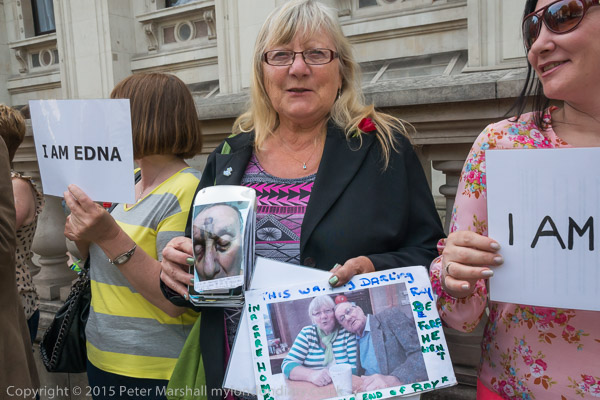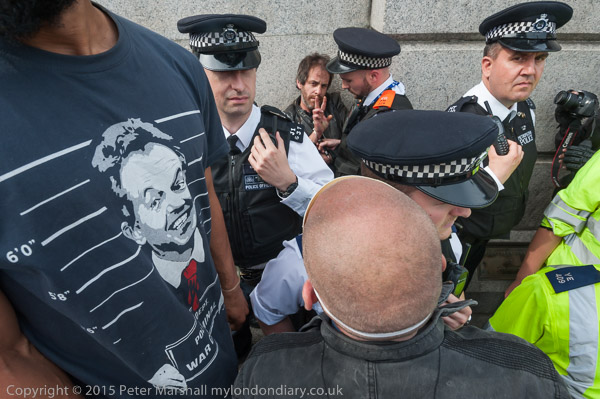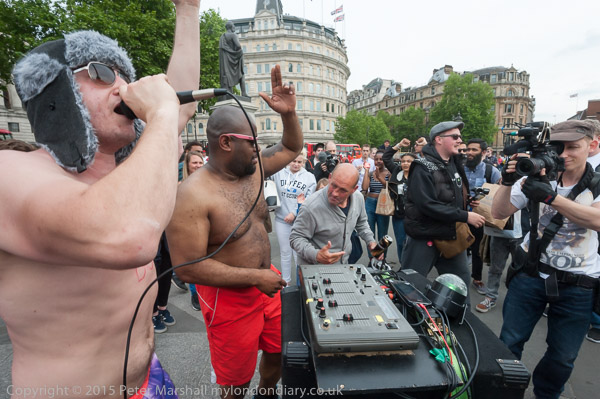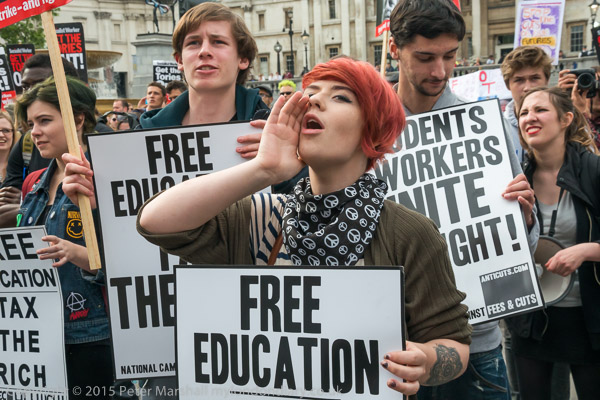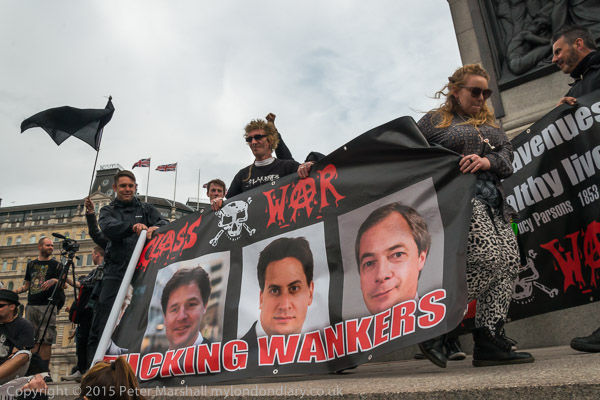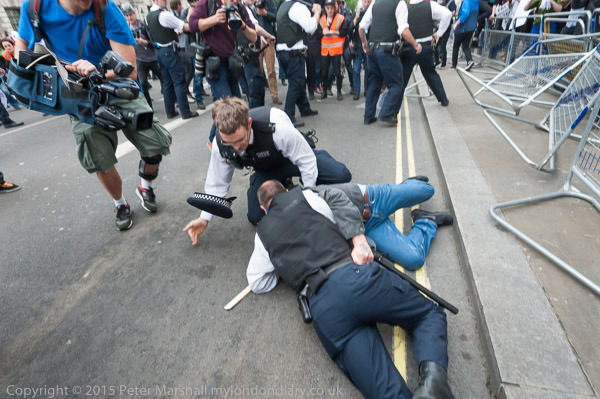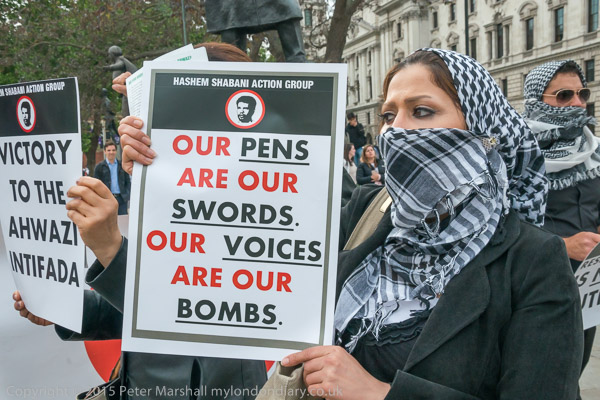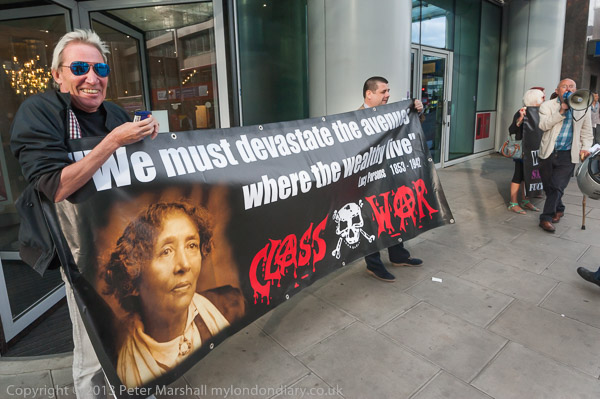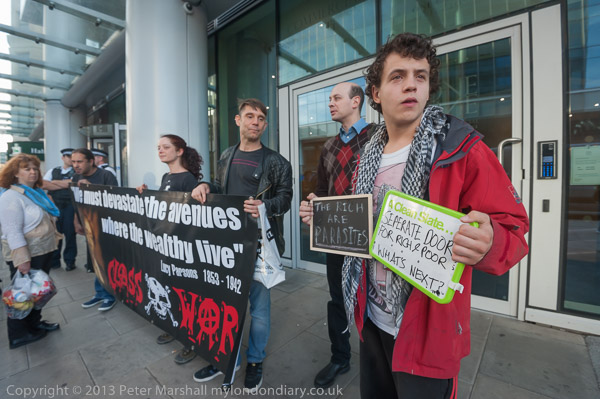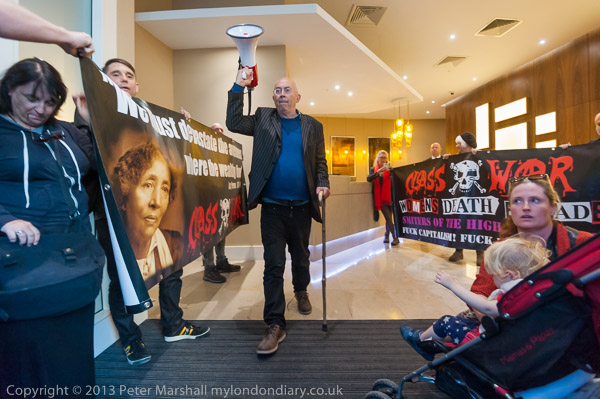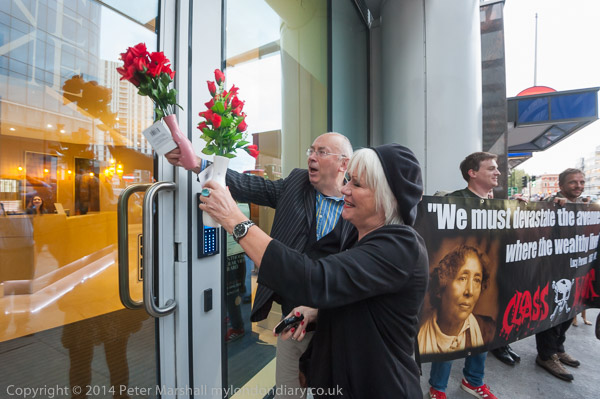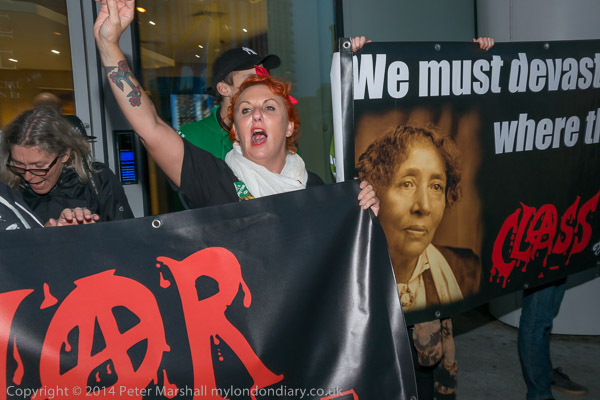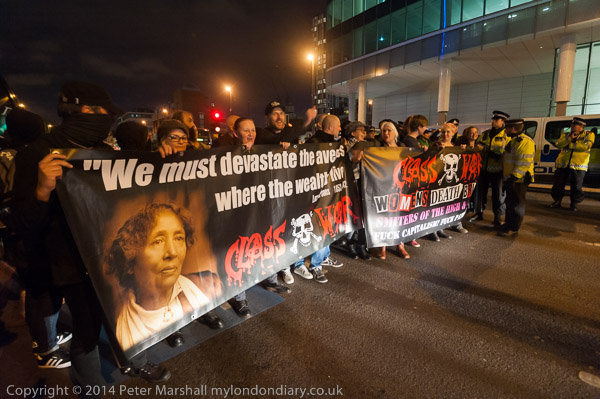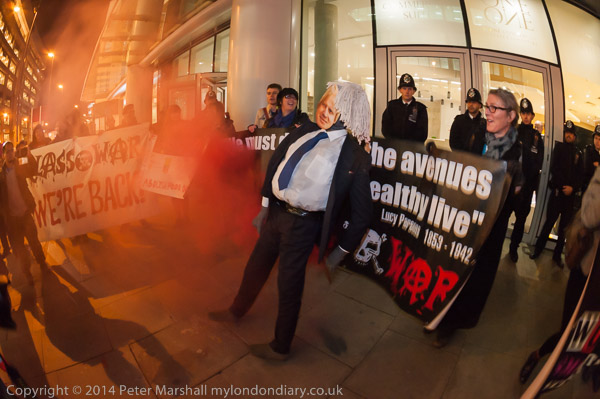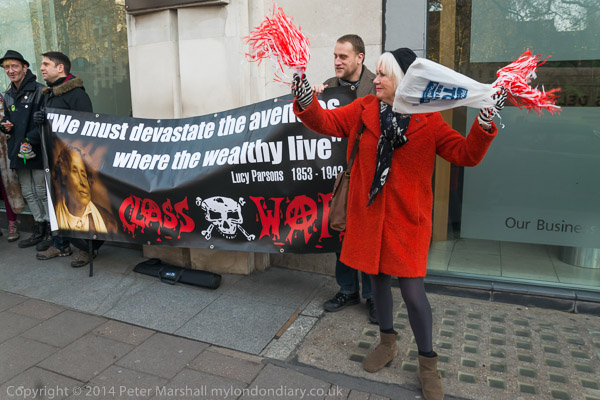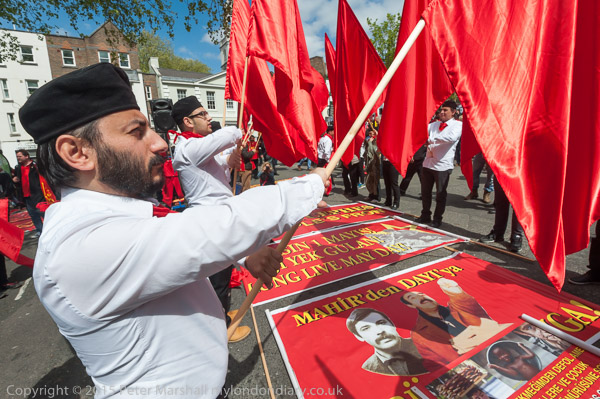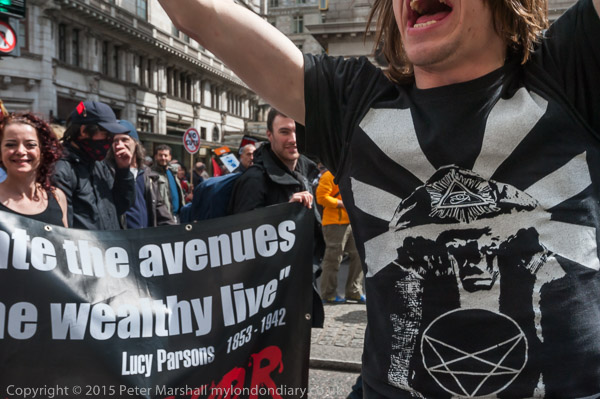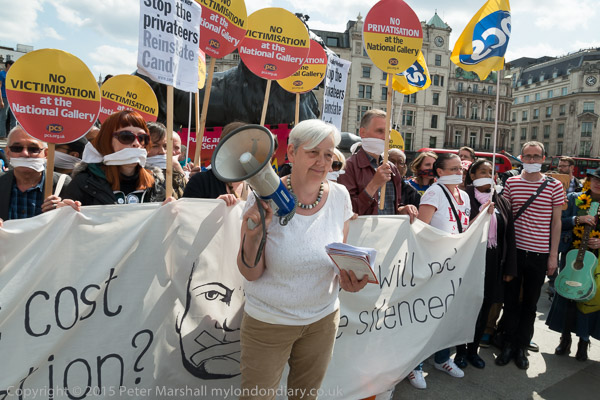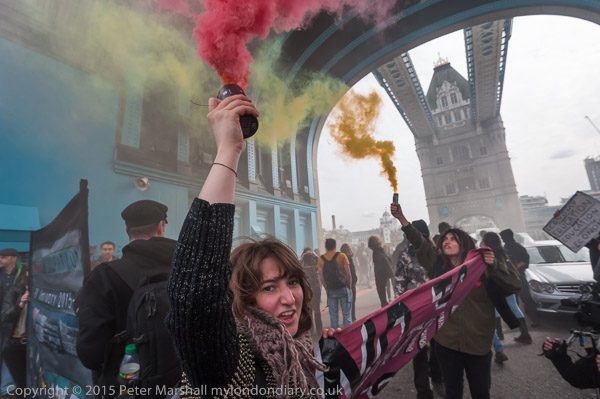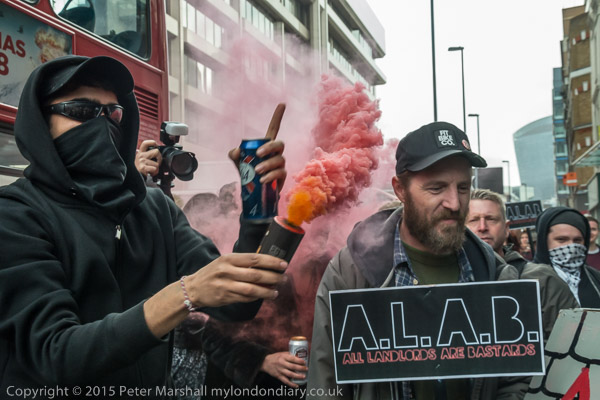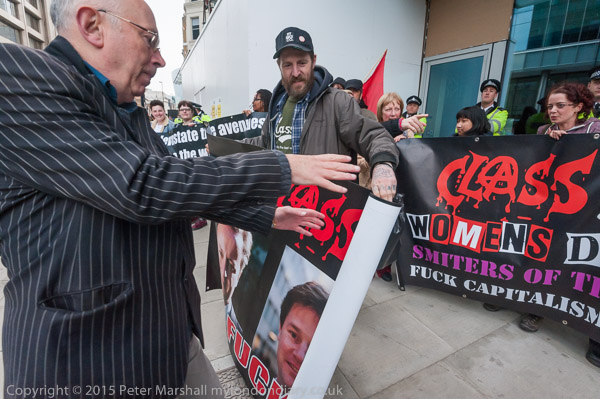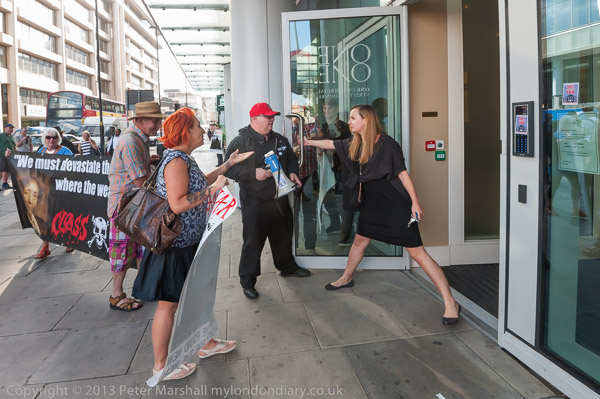
I used the text for this protest on 30th July 2014 as the opening text for my ‘zine’ ‘Class War: Rich Door. Poor Door‘ published in 2015 and still available from Blurb. It was the first in a series of around 30 weekly protests (and a couple of special events, pictures from most of which are in the zine, by Class War at this block in Aldgate where the small proportion of social housing tenants have to use a door down a side alley rather than the plush entrance on the main road for those in the private flats.
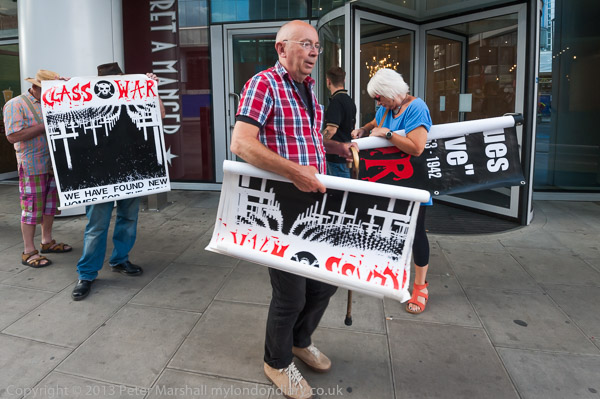
The series of protests had some success – it had immediately resulted in the alley being cleaned up and later it was given much better lighting and it placed the whole idea of ‘poor doors’ firmly on the national and architectural agenda – but eventually failed to resolved the issue for this particular building.
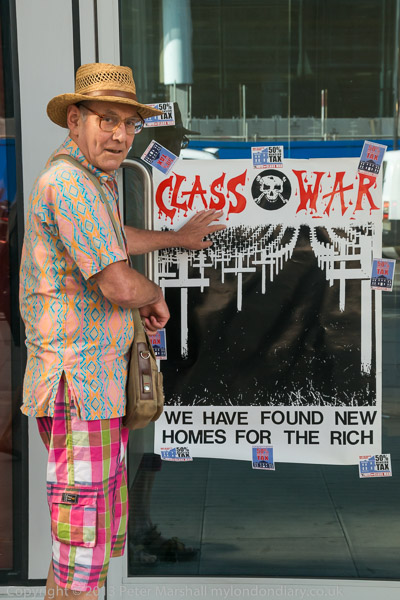
Here’s that text, written on 30 July 2014:
Class War, including three of their candidates for the 2015 General Election, protested at 1 Commercial St in Aldgate against London’s new appartment blocks providing separate ‘poor doors’ for the affordable flats they have to include to gain planning permission for the development. Class War characterise this as ‘social apartheid.’
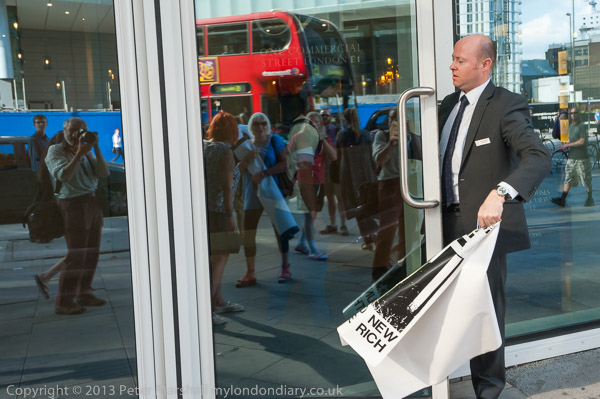
The front entrance on Whitechapel High St (One Commercial St is the name of the block) has a hotel-like reception desk, and is staffed. It leads to the lifts for the expensive flats, many owned by overseas investors. Like most such buildings, some of them are empty and seldom used, while others are short term holiday lets.
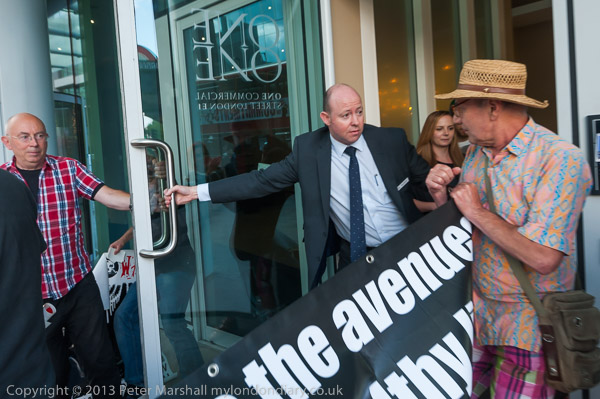
There is apparently no internal connection* between this part of the building and that containing the social housing, which has been given a different name and a separate door some way down the alley on the west side of the building. Their door, the ‘poor door’ has a card entry system which leads to a bare corridor with some mail boxes on one side.
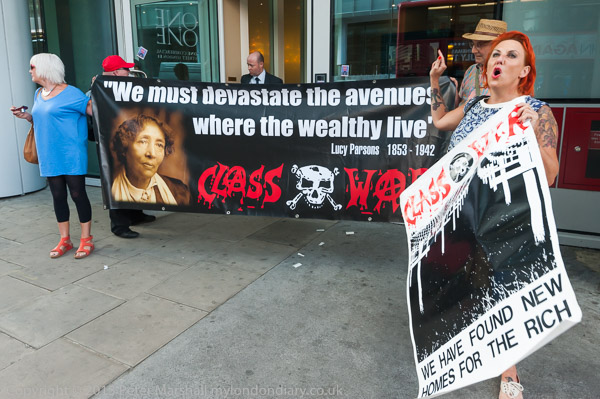
The alley is dark at night, and even though today it was unusually clear of rubbish, it smelt strongly of urine. Certainly a far less friendly place than the well lit main street on which the ‘rich door’ opens. There seems to me to be no reason why all those who live in the building cannot share the same entrance even if their flats are on different floors or different sides of the building, and certainly no reason at all to hide the poor door down a mean alley like this.
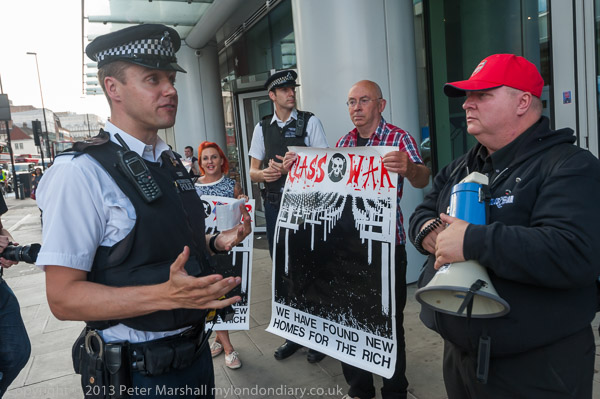
The protesters arrived with a banner carrying a quotation from the radical US labour activist Lucy Parsons (1853-1942) “We must devastate the avenues where the wealthy live“. The Class War posters – with their skull and crossbones – had the message “We have found new homes for the rich” and showed long rows of grave crosses stretching into the distance, and they were stuck on the windows around the poor door using Class War election stickers with their promise of a 50% mansion tax.
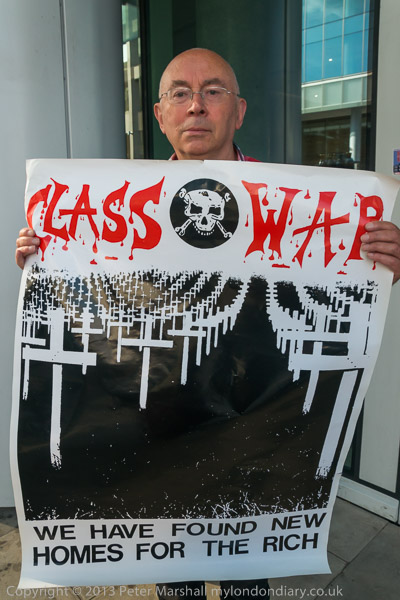
A few people were still entering and leaving the building, with the protesters talking and shouting at them but not actually stopping them, and at one point the protesters grabbed the door when it was open. There followed a brief tug of war with several from inside the building, including one of the residents as well as those from the ‘concierge’ attempting without success to close it. The protesters made little attempt to enter the building but wanted those inside to be able to hear the protest through the open door.
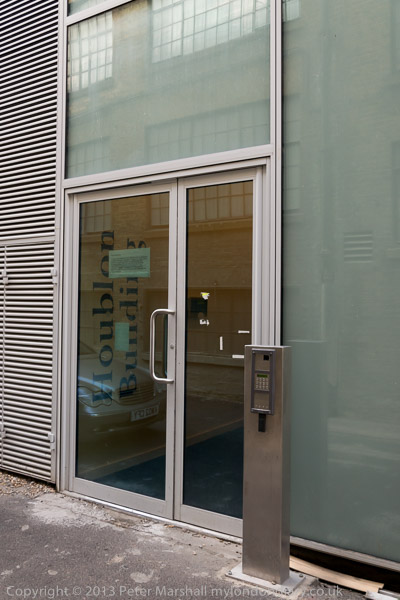
By the time a couple of police arrived and hurried into the building to talk to the people inside around a quarter of an hour the protesters had stopped holding the door. The police came out a few minutes later and tried with little success to get the protesters to move further away from the door.
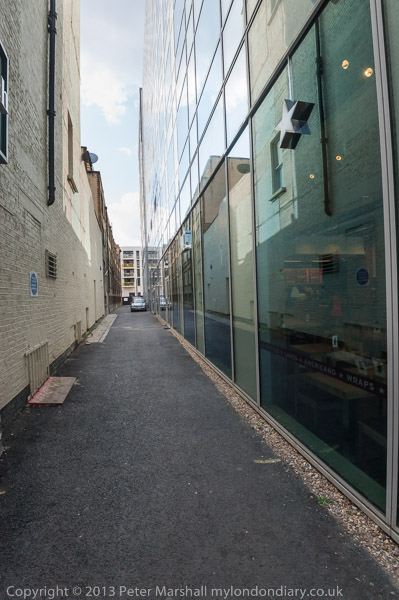
The protest continued until after an hour or so Class War decided they had made their point and left, some for the pub. I went around the building to find the poor door and photographed it and the alley it was in.
Class War – Rich Door, Poor Door
* This was a lie by the building manager. On a later occasion I was taken inside the building by one of the private residents, and after taking me to her flat we then went down and out through the ‘poor door’ which she told me she used when taking her dog for a walk.
All photographs on this and my other sites, unless otherwise stated, are taken by and copyright of Peter Marshall, and are available for reproduction or can be bought as prints.
